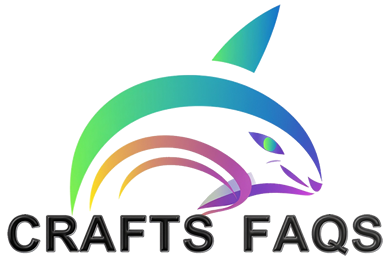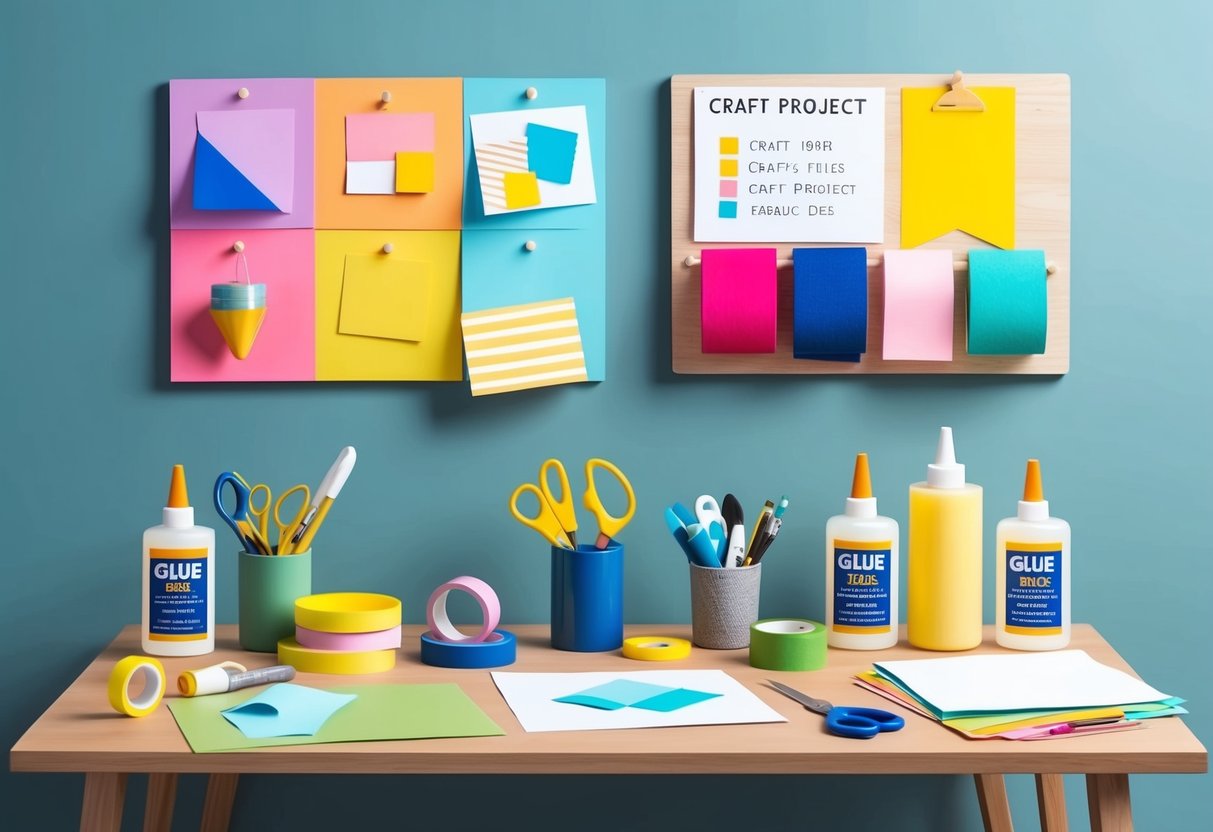
Versatile and Multi-Purpose Glues
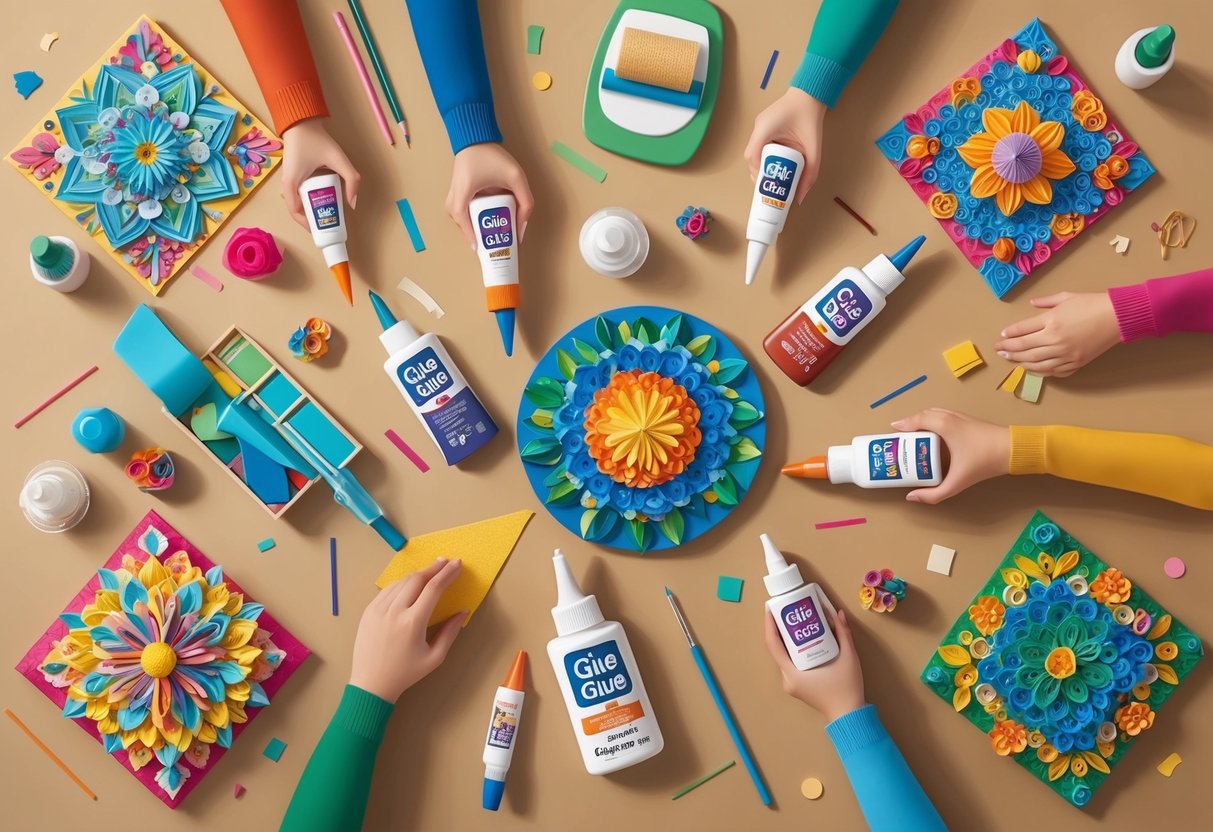
Selecting the best adhesive for crafting often relies on using products that work well across various surfaces and materials, providing both flexibility and strong bonding.
These glues simplify the crafting process by covering a wide range of common needs.
Multi-Purpose Glue Solutions
Multi-purpose glues are designed to bond a mix of materials such as paper, fabric, wood, and lightweight plastics. They are commonly water-based, making cleanup easy and application straightforward.
These glues tend to dry clear, which helps maintain a neat and professional finish.
Key features of multi-purpose glue:
- Works with many non-porous and porous surfaces
- Offers flexible open time for re-positioning materials
- Usually dries quickly and forms a durable bond
Crafters often choose multi-purpose glue for projects involving a combination of surfaces. Households, classrooms, and studios value these adhesives for their versatility and reliability.
Helpful for cardmaking, school assignments, and mixed-media crafts, the best examples are typically labeled “all-purpose” or “craft glue” and can be found in lists of essential craft adhesives.
Polyvinyl Acetate Based Glues
Polyvinyl acetate (PVA) glue is one of the most widely used adhesives in crafts, known for both its strong hold and versatility. It is suitable for paper, cardstock, fabric, and wood, making it ideal for bookbinding, collage, and general arts projects.
Advantages of PVA glue:
- Non-toxic and child-friendly
- Can be diluted with water for thinner applications
- Dries clear, minimizing visible residue
PVA glue creates a flexible bond and is easy to dispense from bottles or with brushes. In educational and crafting settings, it’s often referred to as “white glue.”
Crafters can find more details about the strengths of PVA in guides to craft glues and adhesives. This adhesive is suitable for both beginners and experienced makers due to its reliability and affordability.
Tips for Finding the Right Product
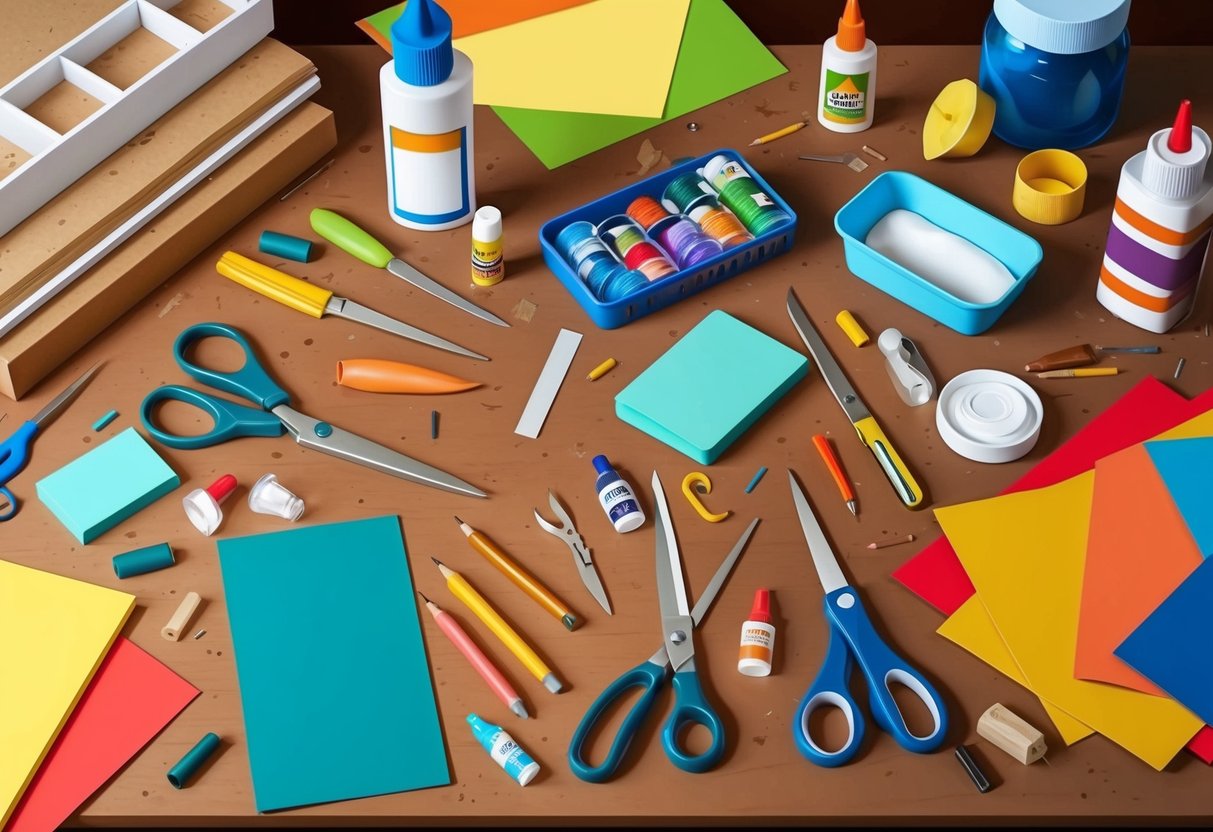
Choosing the right glue for craft projects depends on factors such as surface materials, drying time needs, and application method. Basic options include PVA glue, hot glue, and specialty adhesives.
Each type offers distinct benefits for different tasks, so understanding their properties is key.
Consider the Surface:
Different materials require specific adhesives. For example, paper-based crafts often work best with PVA glue, while plastics or metals may need epoxy or super glue.
For mixed media, versatility is important.
Evaluate Application Method:
Glues come in bottles, pens, sticks, or spray cans. Bottled options with a fine tip allow for precision, while spray adhesives cover larger areas quickly.
Using an easy-to-apply glue can help prevent mess and uneven adhesion.
Check Set and Cure Times:
Some adhesives set rapidly, such as hot glue or super glue, making them practical for quick projects. Others, like certain craft glues, require a longer drying and curing time for a stronger hold.
Always factor in how quickly you need your project to be ready.
Review Key Features:
| Feature | When Important | Example Adhesives |
|---|---|---|
| Acid-Free | Scrapbooking, archiving | PVA, craft glue |
| Waterproof | Outdoor or washable projects | Epoxy, waterproof glue |
| Flexible | Fabrics, wearable crafts | Fabric glue, silicone |
Read Product Labels:
Labels indicate if the glue is non-toxic, acid-free, washable, or suitable for children, which can affect your decision.
Testing a small amount on scrap material is recommended for sensitive or specialty surfaces.
For more guidance, check this ultimate guide to craft glues or learn about different types of glue and adhesives for crafting.
Frequently Asked Questions
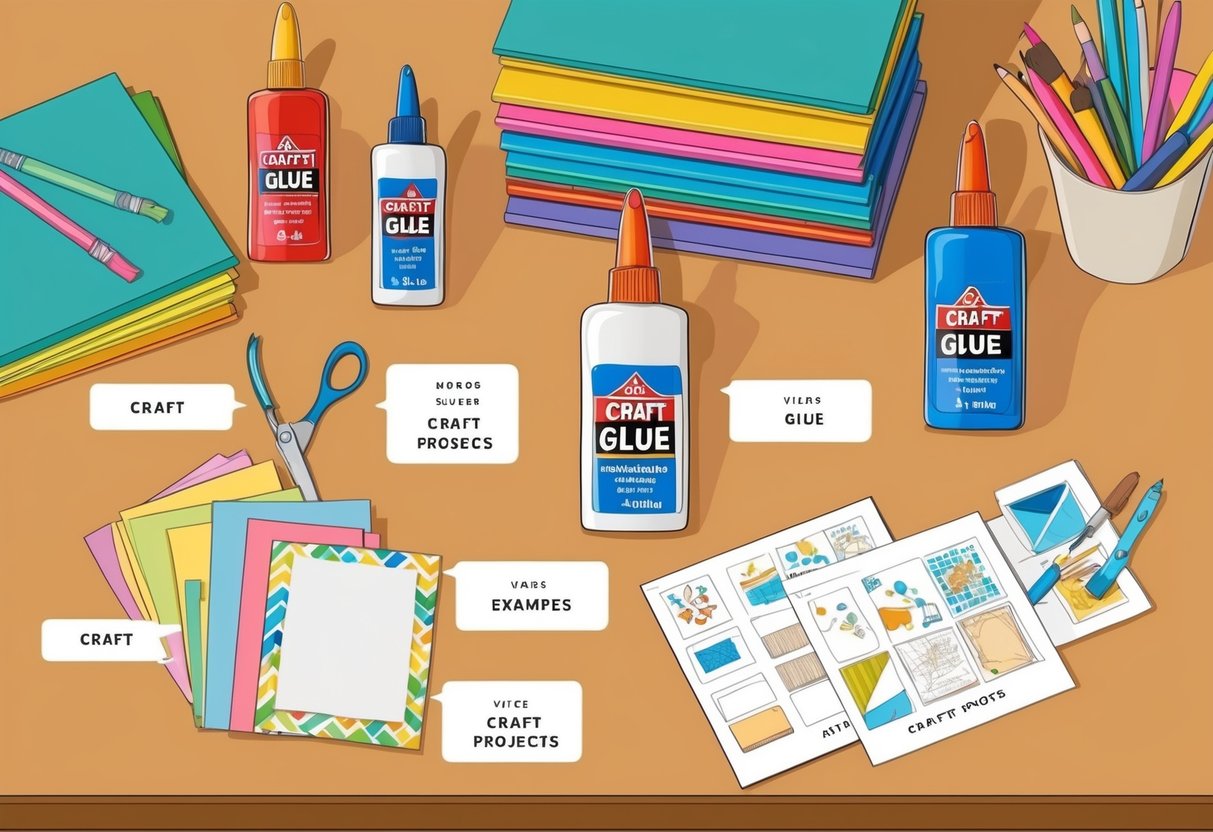
Choosing the right adhesive depends on the specific materials, project requirements, and the durability needed. Many crafters wonder about compatibility, adhesive strength, and which glue best suits their projects.
What factors should I consider when selecting a craft glue?
Evaluate the materials being joined, the flexibility required, drying time, toxicity, and permanence. Different adhesives are designed for paper, fabric, metal, wood, or plastic, so matching the glue with the surface is critical.
Also, consider whether the project will be exposed to moisture, heat, or frequent handling, as these factors can affect bond strength and durability.
Can PVA glue be used on materials besides paper, and how effective is it?
PVA glue, commonly known as white or school glue, is versatile and works well on paper, cardboard, and light woods. It can also work on some fabrics and porous surfaces, making it popular for general crafts.
However, PVA glue is less effective on glossy, non-porous surfaces like plastics or metals. For maximum strength or specialty materials, another adhesive is usually required.
Additional details are available in this guide to crafting glues.
What is the best adhesive for attaching paper to metal?
For bonding paper to metal, a strong, specialty adhesive such as E6000 or a similar industrial-strength glue is recommended. These adhesives can grip non-porous surfaces and prevent warping or peeling.
Hot glue can also provide a temporary bond, but over time it may not withstand handling or temperature changes as well as dedicated industrial adhesives.
How is E6000 Craft Adhesive different from other craft glues?
E6000 Craft Adhesive is an industrial-strength glue known for its flexibility, toughness, and ability to bond a wide range of materials, including metal, glass, plastic, and fabric.
Unlike school glues or basic craft adhesives, E6000 is waterproof, remains flexible after curing, and provides a long-lasting hold. Its versatility makes it useful for challenging projects that involve mixed materials.
What are the top recommended glues for durable book nooks?
For book nooks requiring strong, neat, and lasting bonds, PVA glues are popular for attaching paper or wood. For intricate parts or heavy embellishments, tacky glue, super glue (cyanoacrylate), or E6000 are often used.
Selecting the right glue depends on the components involved and whether the pieces need to withstand movement or weight. Visitors interested in matching glues to specific materials can check this comprehensive glue guide.
Is there a universal craft glue that works for all materials, or do I need different types for each project?
No single glue works perfectly for all crafting materials.
Crafters generally need a few different adhesives in their supply, chosen for the materials they use most frequently.
PVA glue is widely used for paper and fabric. Epoxy, hot glue, or industrial adhesives handle metal, glass, and plastics.
For more on which glue is right for each kind of craft, visit this ultimate guide to adhesives.
